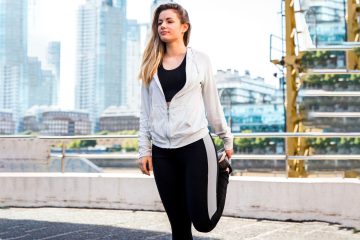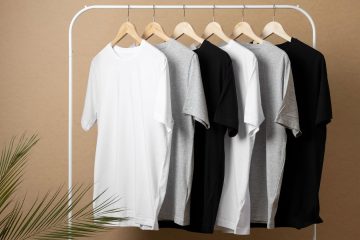The Rise of Activewear: Fashion, Functionality, and the Power of Versatility
Activewear has taken the world by storm, becoming one of the most dominant trends in the fashion industry over the past decade. What was once confined to gyms and sports fields has now permeated everyday wardrobes, blurring the lines between fitness gear and casual clothing. From yoga studios to coffee shops, activewear is everywhere, embraced for its comfort, functionality, and stylish appeal. In this blog, we’ll explore the evolution of activewear, its impact on fashion, the driving forces behind its popularity, and where the trend is headed next.
The Evolution of Activewear
Activewear’s journey from workout gear to mainstream fashion is a story of innovation and changing societal attitudes. In the past, exercise clothes were designed with a singular focus on function, often sacrificing style. Athletes and fitness enthusiasts wore basic cotton t-shirts, shorts, or simple leotards—functional but far from fashionable.
The 1970s and 80s saw the rise of more specialized sportswear, with brands like Adidas, Nike, and Reebok leading the charge. These companies began to incorporate more advanced materials, such as moisture-wicking fabrics and breathable meshes, making sportswear more comfortable and effective for physical activity. However, it wasn’t until the early 2000s that activewear started to truly evolve into what we recognize today.
The advent of yoga as a mainstream practice played a significant role in this transformation. As yoga became popular, so did the need for clothing that was not only functional but also stylish and suitable for a variety of settings. This demand gave rise to brands like Lululemon, which revolutionized the industry with its sleek, body-hugging designs made from innovative fabrics that combined stretch, durability, and comfort. This marked the beginning of the “athleisure” movement, where activewear transcended the gym to become a staple of everyday fashion.
Fashion Meets Functionality
One of the key reasons behind activewear’s popularity is its perfect blend of fashion and functionality. Modern activewear is designed to perform under the most demanding physical conditions while also looking stylish and flattering. This duality is a major draw for consumers who want clothing that can transition seamlessly from a workout session to a casual outing.
The rise of advanced materials has been central to this shift. Fabrics like Lycra, spandex, and nylon have become the backbone of activewear, providing the stretch, support, and breathability needed for physical activity. Additionally, the development of moisture-wicking technology ensures that activewear can keep up with intense workouts by drawing sweat away from the body, keeping the wearer dry and comfortable.
Beyond functionality, design plays a crucial role in the appeal of activewear. Today’s activewear comes in a wide range of styles, colors, and patterns, allowing individuals to express their personal style while staying active. From bold prints and vibrant colors to minimalist designs and neutral tones, there’s something for everyone. Brands have also started to cater to a more diverse range of body types, with inclusive sizing and designs that offer both support and style.
The Power of Versatility
One of the most significant reasons activewear has become a wardrobe essential is its versatility. The concept of “athleisure” has blurred the lines between athletic wear and casual fashion, making it acceptable to wear activewear in various social settings. What started as a trend has now become a lifestyle choice for many, where comfort and style go hand in hand.
This versatility is evident in the variety of activewear pieces available today. Leggings, once worn solely for exercise, are now a fashion staple, often paired with oversized sweaters, blazers, or casual tees for a chic, everyday look. Similarly, sports bras, crop tops, and hoodies have crossed over into streetwear, embraced by fashion-forward individuals who value both comfort and aesthetics.
The rise of the remote work culture has also contributed to the popularity of activewear. With more people working from home, the demand for comfortable yet presentable clothing has skyrocketed. Activewear, with its combination of stretch, comfort, and style, fits perfectly into this new way of life, allowing people to transition from a morning workout to a video call without the need for a wardrobe change.
Sustainability in Activewear
As with many sectors of the fashion industry, sustainability has become an increasingly important consideration in activewear. Consumers are becoming more aware of the environmental impact of their clothing choices, leading to a growing demand for sustainable activewear options. In response, many brands are now focusing on creating eco-friendly collections made from recycled materials, organic cotton, and sustainable production practices.
Brands like Girlfriend Collective and Patagonia have made significant strides in this area, offering activewear that not only performs well but also minimizes environmental impact. These companies use recycled plastics, fishing nets, and other waste materials to create their garments, proving that style, performance, and sustainability can coexist.
The Future of Activewear
Looking ahead, the future of activewear seems bright, with continued innovation and a focus on inclusivity and sustainability. As technology advances, we can expect even more high-performance materials that offer greater comfort, support, and durability. Moreover, the trend towards personalization will likely grow, with brands offering customizable options to cater to individual preferences and body types.
Inclusivity will remain a driving force in the industry, with more brands recognizing the importance of catering to all body shapes, sizes, and fitness levels. This shift towards a more inclusive and diverse range of options will continue to redefine what activewear can be, making it accessible and appealing to everyone.
Conclusion
Activewear has transcended its origins as simple workout gear to become a cornerstone of modern fashion. Its rise is a testament to the power of versatility, the demand for comfort, and the blending of fashion and function. As the industry continues to innovate and evolve, activewear will undoubtedly remain a dominant force in both fitness and fashion, reflecting the changing lifestyles and values of consumers worldwide. Whether you’re hitting the gym, running errands, or just lounging at home, activewear offers the perfect combination of style, comfort, and performance for every aspect of life.




